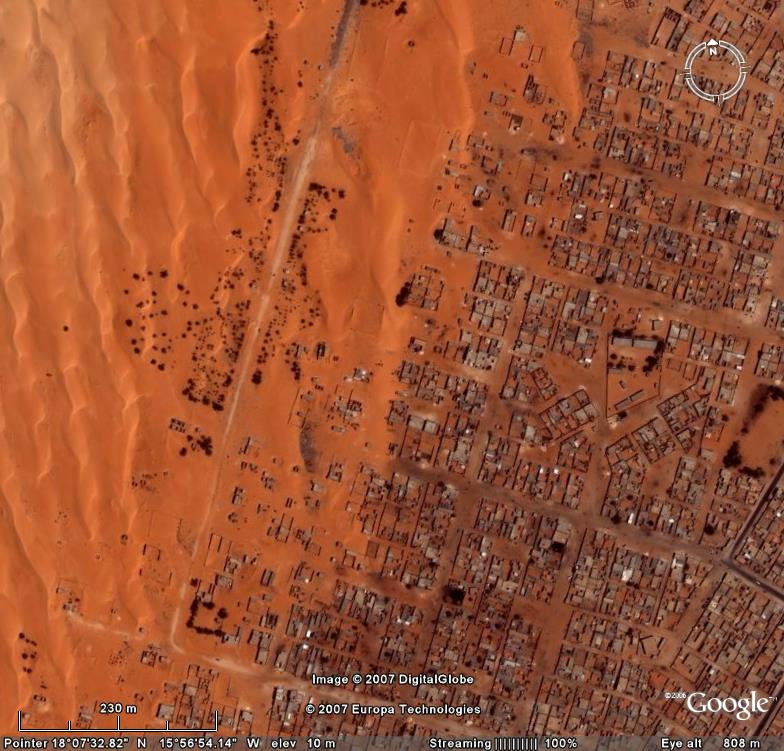Back to Environment > Dune Research
Abstract
Sand dunes are one of the most intriguing geological formations on the earth’s surface, as they appear in dozens of different structures with varying heights. While some dunes are fixed or inactive and others imperceptibly creep a mere 5 cm (2 in) a year, the run-of-the-mill dune migrates between 24-30 m (80-100 ft) per year. However, remarkable dune movements of up to 107 m/yr (350 ft/yr) have been observed in Egypt and China. Shifting dunes, propelled by strong winds, are one of the most serious ecological threats facing populated regions abutting a desert as well as those along coasts of humid sand areas, such as western Europe. When deep sand piles begin to intrude onto inhabited areas – whether villages, farms, or grazing land – populations can be dislocated, agricultural land ruined, subsistence severed, and poverty broadened. As a stark example, the Chinese government has reported that migrating sand dunes from the Gobi Desert cost the nation nearly $7 billion per year and affect the lives of 400 million citizens.

Sand dunes Encroaching Nouakchott the capital of Mauritania at the western edge of the Sahara desert (Google Earth photo).
Prof. Haim Tsoar of the Department of Geography and Environmental Development at Ben-Gurion University is studying the physics of dune movement and the climatic effects affecting their migration. His work relates primarily to dunes in Israel and the neighboring Sinai desert, but his investigations also involve sand in northeast Brazil, the Aral Sea Basin, and even the dunes seen over much of the northern polar region of Mars by the Viking Orbiter satellites. Tsoar’s research has detailed, for the first time, how high wind power rather than low rainfall is the cause of vegetation loss that causes stabilized dunes to start moving. [1] He has applied this approach to dunes in the semi-arid regions in Israel’s Negev, in particular the region south of Ashdod [2], and to the existence of active dunes on the coast of northern Brazil, despite extremely heavy rainfall and vegetation growth of this in tropical region. Tsoar’s modeling approach and experiments in wind tunnels on earth have clarified the nature of dune formation on the Martian surface [3].
What are dunes?
Climate and dunes